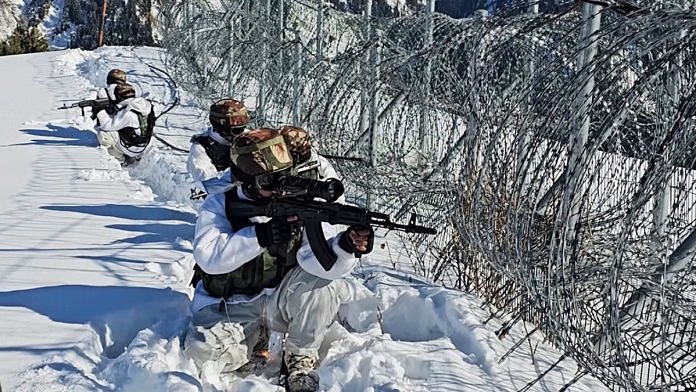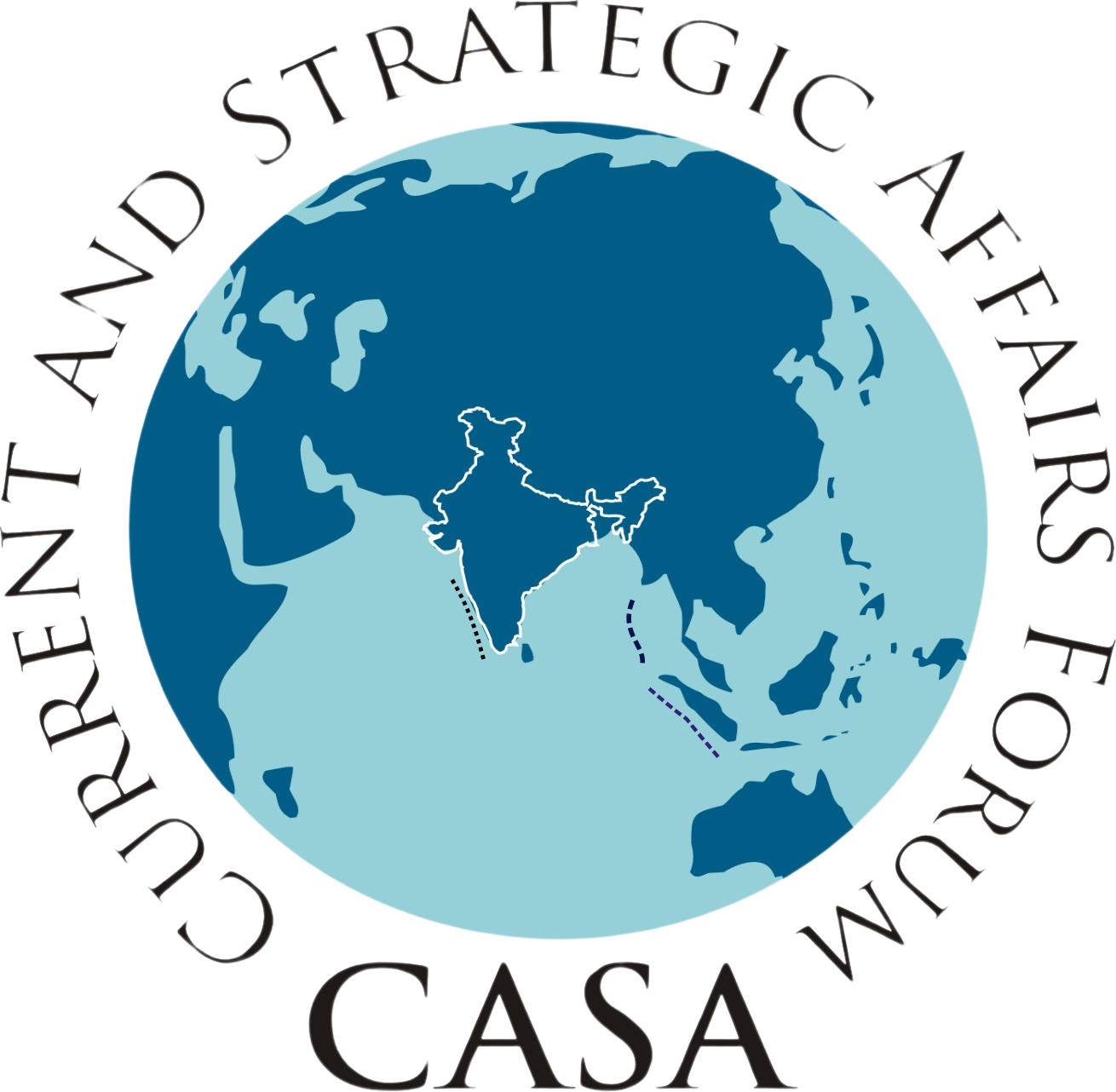Any cross-border strike by India faces a potential drawback. It may be seen as underwhelming
- May 20, 2025
- Posted by: admin
- Categories: India, Jammu & Kashmir, Kashmir

The response of Kashmiris has been an outcome that is a true game-changer. The present government has an opportunity to claim ownership over this final and happy chapter.
Sidharth Raimedhi and Bashir Ali Abbas
Since the Pahalgam terror attack of 22 April, there have been expectations of an Indian ‘retaliatory’ attack against Pakistan—making the present situation an acute crisis between two nuclear states. However, a cost-benefit calculation reveals that India’s response could be somewhat unexpected. India could stop short of an escalatory military assault similar to the Balakot airstrike of 2019.
India could instead be increasingly drawn toward a response that stacks up coercive pressure while constructing a form of crisis termination that is mostly political and emphasises the bigger picture.
There are three primary reasons for this—military dynamics, international stakes, as well as a political off-ramp that has the potential to be satisfactory. Let us explain.
Military dynamics and brinkmanship
There are three ways in which 2025 is not 2019. First, and the most regrettable aspect—Pakistan has modernised, equipped and integrated its ground and air forces, which leaves India with high-risk choices in terms of escalation control/management. Marked by a crisis of legitimacy and resultant siege mentality, Pakistan’s posture has also been one of greater desperation—giving it some psychological advantage in a twisted sense.
In 2019, Imran Khan expressed willingness to conciliate and temper escalation. In 2025, Pakistan, under COAS Asim Munir, has sought to frontload military preparedness to engage in an escalatory spiral (to deter India) instead of advocating for a politico-military climbdown based on talks and cooperation.
Second, Balakot 2019 had the element of novelty. Such an air strike had not been executed before, giving India the advantage of strategic surprise—as well as impact. Given that Pakistan appears to have a stronger deliberate hand in the recent terror attack, Pakistan is better prepared for military escalation now, than in 2019.
Moreover, Asim Munir can ill afford a strategic humiliation, given the scale of political troubles at home. This implies high resolve to respond and escalate. It is worth noting that Balakot has been interpreted differently in Pakistan compared to India—as evidence of the PAF’s coming of age and ability to both intercept as well as deliver payloads into Indian territory with relative accuracy.
Hence, the state of deterrence between India and Pakistan is contested owing to differing perceptions of the last military face-off. This makes Pakistan more confident in the present. Its Air Force in particular has modernised further since 2019, benefiting significantly from joint exercises with the PLA Air Force and a significant upgradation in its air-to-ground strike capabilities.
Moreover, the fog of war and spectre of military mishaps will weigh heavily on the Indian government’s mind. During previous crises, India could rely on US intervention and mediation to put the brakes on uncontrolled escalation. That aspect is more uncertain this time—raising the risks further.
Also read: What Operation Parakram taught us—deterrence requires more than just mobilisation or rhetoric
International stakes and Pakistan’s objectives
There is a greater variation in terms of stakes and objectives as well, and a strong divergence between Indian and Pakistani trajectories.
India has reason to maintain the de-hyphenation of India and Pakistan, so well managed since 2019. The same could be said about India’s interest in the de-internationalisation of the Kashmir issue, toward a preference for the bilateral and eventually toward it becoming simply a non-issue. This part of India’s Pakistan strategy has been wholly internal. It has entailed steps towards good governance, economic development and closer integration between Kashmir and India. It has, in fact, also entailed deliberately ignoring Pakistan altogether in the aftermath of smaller scale terror attacks over the last few years.
As EAM S Jaishankar noted in January last year, “We have made Pakistan’s policy irrelevant by not playing their game”. Pakistan’s motive, after all, is to sow division between Hindus and Muslims, between Jammu and Kashmir and finally between Kashmir and India.
A military option by India that does not achieve efficient success has the potential to drag matters in a direction that suits Pakistan’s Kashmir strategy and delay the inevitable—India’s rise on the world stage as well as the resolution of the Kashmir ‘dispute’ in India’s favour.
Pakistan’s frustration with India’s approach has also grown over the years, especially at three levels. First, Islamabad expected the 2021 DGMO-led ceasefire to lead to broader talks with India, especially with Bajwa (who was Army Chief at the time) having megaphoned his geo-economic focus for ties with neighbours. This did not happen.
Second, the Shehbaz Sharif government in Pakistan has made several calls for dialogue with India, post-Imran Khan’s removal. However, such calls have been accompanied by a re-assertion of Pakistan’s demand that India roll back its abrogation of Article 370. This, along with Pakistan’s continued sponsorship of cross-border infiltration for terrorism, has meant that India has had no incentive to respond positively.
Third, the incidents of unknown gunmen killing known terrorist leaders in Pakistan have been frequent across the past few years—with the killing of a retired Brigadier (of the ISI) in June 2024 crossing almost a sanctimonious red line for Pakistan. Hence, given the failure of Pakistani attempts thus far to sway India’s hand, Pakistan has enough incentive (out of desperation) to impose costs on India.
The arena for this is Kashmir—where New Delhi has not just used booming tourism as a yardstick of success for its post-2019 policies, but also where even Pakistan’s Gulf allies have emerged as India’s partners for developmental projects. Hence, a constant effort by Pakistan through Lashkar/Jaish proxy groups has been long underway—the Reasi attack on Hindu pilgrims last year would arguably have reached Pahalgam’s intensity had the bus not plummeted into a gorge after terrorists (from the TRF) opened fire.
Also read: Striking back at Pakistan is full of risks. India must master choreography of escalation
A highly calibrated kinetic response is still possible, but…
In terms of a military response, then, India has to find an option that achieves the right balance of its three-headed objective. It has to be spectacular/impactful enough to satisfy domestic sentiment, controlled enough to avoid a hard-to-control escalatory spiral and meaningfully costly for Pakistan in order to repair deterrence.
Hence, India’s options include strikes against terror infrastructure in Pakistan proper or PoK using stand-off weapons from the air or surface, combined with possible action by Border Action Teams along the LoC/IB, which is dispersed across both time and space. Essentially, a sustained effort that is larger in scope, with an effort to manage escalation.
Yet, despite such options entailing costs and risks that are somewhat more manageable, any cross-border strike faces a key potential drawback. In the domain of perceptions, such actions may be seen as ‘underwhelming’ (except for covert operations over the coming months). This risks the perception that India chose an overly-calibrated response that is not ‘proportionate’ to the dastardly nature of the attack itself. This might fail to meet the criteria of military domination as well as proportionate cost-imposition—leaving India’s deterrence stock value in a weakened state. Most analysts that we have spoken to state that they expect at least ‘something’. And even though ‘something’ may be better than ‘nothing’, ‘something else’ may be even better than something.
Also read: Kashmir’s Leepa Valley is on fire. Is a new war brewing on the Line of Control?
The something else option
The recent terror attack is a desperate spoiler move by a nervous Pakistani establishment that has reasons to worry about the existential politico-ideological threat it faces. This comes mainly from ongoing trends (since 2019) on the Indian side of the LoC. The increased normalisation in Kashmir and its people’s reconciliation with democratic India is the main story.
On this ground, the government has reasons to stand and demonstrate self-assurance. The response of Kashmiris from all walks of life—from pony riders to police to political parties and civil society—has been an outcome that is a true game-changer in this 77-year ideological contest between democratic India and Army-ruled Pakistan. The present government has an opportunity to claim ownership over this final and happy chapter. In fact, the outpouring of solidarity and grief from ordinary Kashmiris is an enormous political opportunity to further cement the region and people’s bond with India. Future historians may indeed see it as such.
As hawks, we would prefer a situation in which India is both prepared with immediate and conclusive military options while also justifiably claiming political and moral victory. If such an option based on reasonable military dominance is still available and presented, then nothing like it. However, this may not be the case owing to the fact that the Indian military is undergoing strong transitions—with the future contest with China in mind.
Sidharth Raimedhi is a Fellow at the Council for Strategic and Defense Research (CSDR), a New Delhi-based think tank. He tweets @SRaimedhi.
